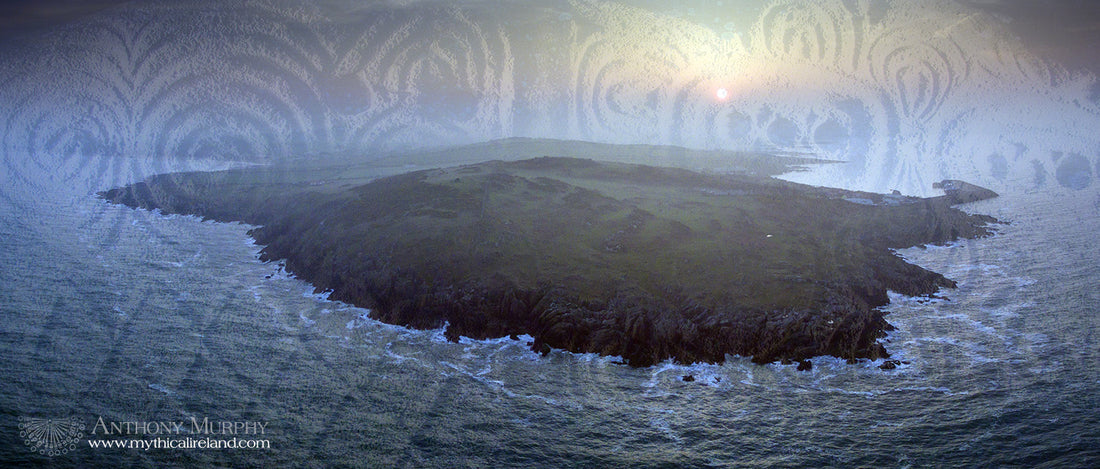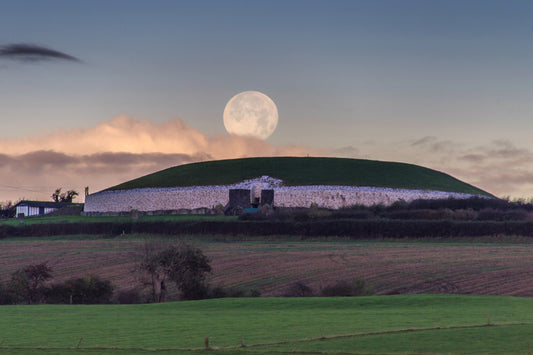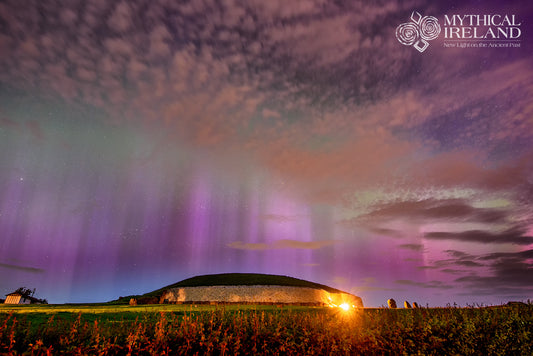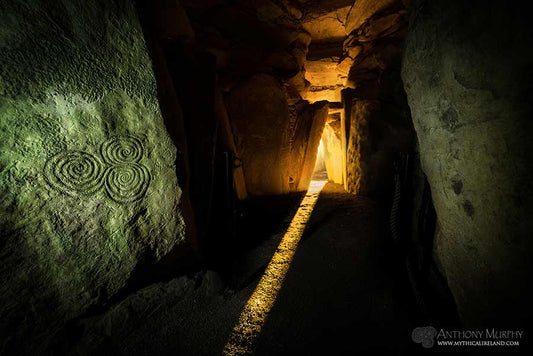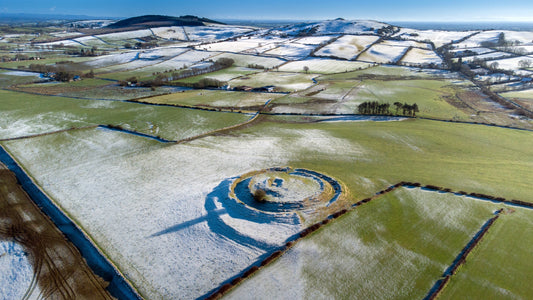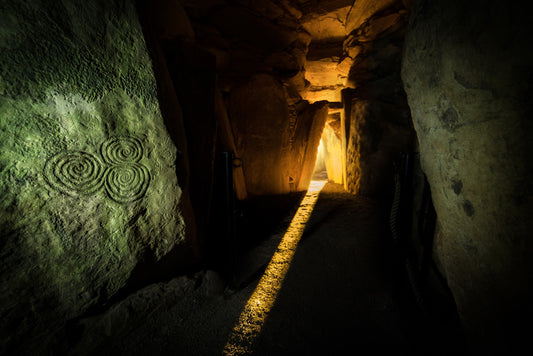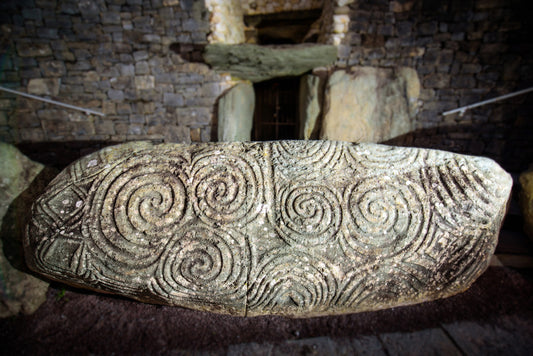Clogherhead, County Louth – a huge rocky outcrop jutting into the Irish Sea. But this is no ordinary headland. It holds some extraordinary secrets.
Clogherhead is a place that is both geologically and archaeologically fascinating.
The muddy standstones of which the cliffs are comprised rise up out of the earth vertically, revealing something of the cataclysmic events that took place here 400 million years ago.

Vertical rock formations at Clogherhead.
Before that time, the northern part of Ireland and the southern part were separated by a vast body of water, 3,000 kilometres wide. Geologists call this the Iapetus Ocean.
Four hundred million years ago, two land masses or continents that had previously been separated by this ocean slammed together. These continents are called by geologists Laurentia and Avalonia.

The Iapetus Suture runs from the Shannon Estuary to Clogherhead.
The seam left behind by this collision is called the Iapetus Suture. It runs across Ireland from the Shannon Estuary to Louth, and Clogherhead is the only place in Ireland where it can be seen in the surface rocks.
Fossils found north of Clogherhead are vastly different to those found to the south. They came from parts of the earth that were once 3,000 kilometres apart.
The builders of Newgrange used the vertical formations of layered greywacke at Clogherhead to their advantage. They were, it seems, able to prise specimens out using something like wooden poles, and – we are told by archaeologists – they strapped them to the underside of a boat or a barge.

A spiral-shaped fossil at Clogherhead.
At high tide, the sea would lift the raft with stone underneath and the pilot of this barge would steer it down along the coast and up the river Boyne to the great monuments of Brú na Bóinne.
The huge kerb stones which form the perimeter of the great cairn of Newgrange were brought from Clogherhead.
There are 97 of them. They weigh, on average, three tonnes apiece, with the heaviest weighing around ten tonnes.
Every one of these kerb stones, along with at least another one hundred large structural stones, was brought from Clogherhead by boat – and that’s just for one of the three great mounds.

Fog at Newgrange, pictured from the air.
There were hundreds more stones used in the construction of Knowth and Dowth and the many smaller satellite mounds at the Bend of the Boyne.
The tenacity and sheer will of the builders of Newgrange and its sisters has to be greatly admired.

Clogherhead at sunset from the air.
We are in awe of the achievements of the builders of the megalithic monuments of five thousand years ago.
WATCH THE VIDEO ABOUT CLOGHERHEAD'S AMAZING SECRETS BELOW:

